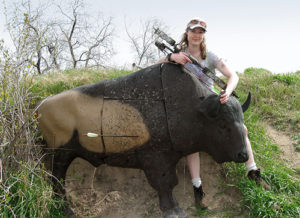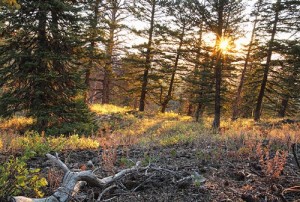Getting in Shape for Backcountry Hunting
To succeed with today’s trophy bucks you need to start hunting where other hunters stop. The best hunters I know have no physical limits. They can get go anywhere the animals go, and then get the animal out after the shot.
If you want to spend more time hunting and less time recovering, you’ll need to put a pack on and literally run to the hills long before the season opens.
I won’t get into any specific work-out regimens here; just know that your regular work-out should include donning a heavy pack and doing some vertical hiking. In addition to cardio, a little weight training will do wonders to strengthen your back, legs, and core.
Cardio Training
Cardio training—aka high-endurance aerobics—is the best thing you can do to prepare for backcountry hunting. If your heart and lungs are sluggish, it won’t matter how big your biceps or quads are. Your cardiovascular system is what delivers necessary oxygen and nutrients to your muscles.
Any cardio-type exercise will help prepare you for the mountains, but if you’re planning an extreme pack-in hunt, you’ll need to change things up a bit. A daily jaunt on the treadmill won’t be enough.
For backcountry hunts I recommend starting a high-endurance aerobic exercise regimen at least two months in advance. Running, biking, swimming, and hiking are all good activities. Do at least one of these activities three times a week for a minimum of one hour.
You should get your heart rate up to 60-65 percent of your maximum heart rate, and then keep it there for at least one hour. If your goal is to become an “extreme wilderness athlete,” you’ll need to bump your heart-rate up to 70-85 percent of maximum heart rate, and then keep it there for a minimum of two hours.
Note: To figure out your “theoretic” maximum heart rate, simply subtract your age from 220. For example, if you are 30 years old, then your maximum heart rate is 190. To reach 85% of maximum heart rate, you simply multiply 190 by .85 (161.5 beats per minute). The only way to monitor your heart rate is with a fitness tracker. I use the cheap and effective Amazfit Band 5 Activity Fitness Tracker found on Amazon.
Again, it all depends on your style of hunting. If you’re sitting in a tree stand or ambushing a water hole, then you can get away with some pretty low-intensity training. A little jogging or cycling around the block a couple times a week would suffice.
Strength Training
After cardio, leg training should be your top priority. Your legs are the powerhouse of hiking and packing.
Trail running on uneven ground is an ideal exercise for your legs. In addition to intense cardio, running on uneven ground also strengthens the lower legs and joints. Like every joint in the body, the knees and ankles are surrounded by a vast network of tendons and muscles. Strengthening and tightening these joints also helps you to avoid injuries in the backcountry.
Trail running has the added benefit of preparing your body for high-altitude conditioning and endurance. This is especially important for low-landers since everything becomes more difficult with altitude.
Note: If you are out of shape, trail running can be a very arduous workout. At the very least, you should begin with trail hiking, and work up from there. You’ll still get many of the same benefits of running.
Back and Core Muscles
Heavy packing relies on both your legs and your back. Dead-weight lifting and squats are the two best ways to condition your back and core.
In addition to weight training, hiking while wearing a heavy pack will help strengthen your back and core muscles. Taking extended scouting trips into the mountains is a great way to train while scouting for animals.
Conclusion
There’s no way around it; backcountry bowhunting requires you to be an athlete. Proper training for the backcountry means taking on a three-prong approach starting with cardio, then leg training, and finally back and core.









